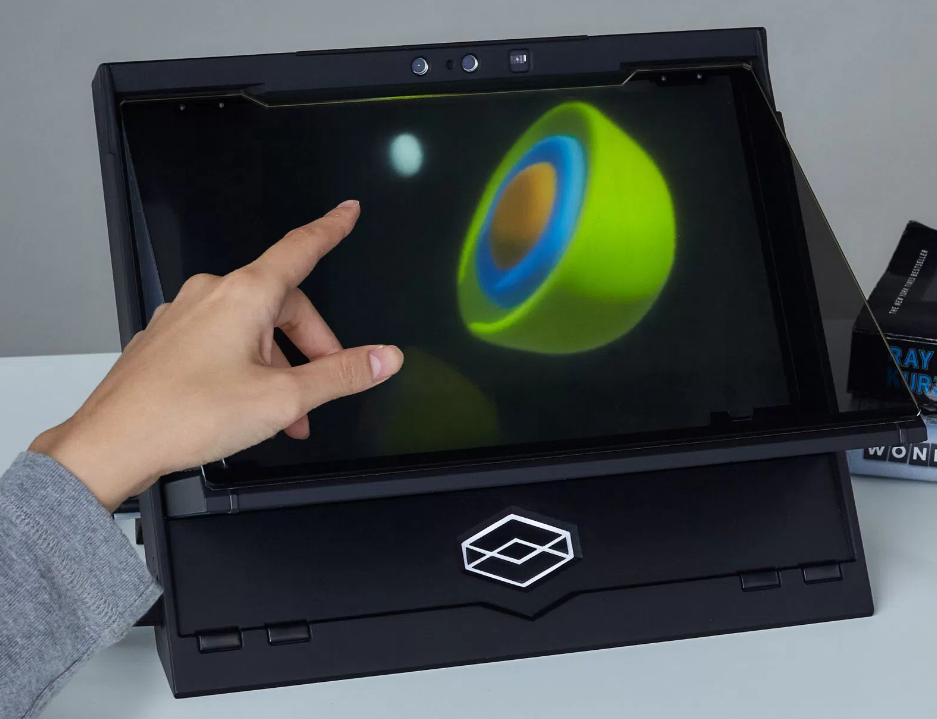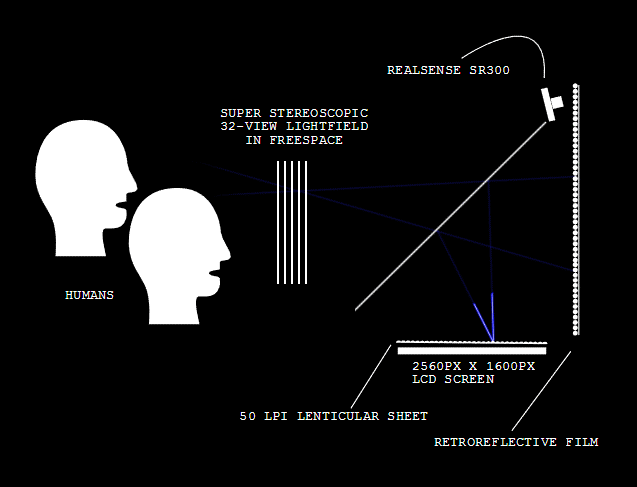By Warren Miller, contributing writer
As augmented reality (AR) begins to take over the world of interactive VR technology, we might not be far away from an even bigger leap into the future. Do you remember the episodes of “Star Trek: The Next Generation” in which Data and Geordi La Forge would dress up like Sherlock Holmes and Dr. Watson and enter a room that projected three-dimensional, life-like holograms of late 19th century Londoners? That may still seem like a fantastical conceit of science fiction, but holograms may not be as far from the horizon as you think.
New-York-based computer game company Looking Glass recently announced the HoloPlayer One , a portable machine approximately the same size as a laptop computer that can display interactive, three-dimensional holograms. Looking Glass designed two different models: one that plugs into a desktop or laptop computer through an HDMI cable and another that contains a built-in Intel Core i7 processor. The latter version works independently of another computer but is four times as expensive ($3,000, as compared to $750). Both models use a 2560 x 1600 LCD display and employ a depth-sensing camera similar to the type incorporated into the iPhone X to represent and manipulate content.

The HoloPlayer One. Image source: Looking Glass.
Although AR is often thought of as the wave of the future, the most recent technological advancements in the field still frequently require the use of bulky headsets to view the overlaid images and cumbersome gloves to interact with them. One of the comparative benefits of a system like the HoloPlayer One is familiarity — the user can interact in almost exactly the same way that they would with a personal computer equipped with a touch screen. Another is the possibility for cooperation — if two different users want to interact in the same augmented reality, they need two headsets. A free-standing holographic projector would allow multiple people to sit in front of it simultaneously, as they might in front of a computer or in front of a TV while playing video games.
The technology is still in gestation, a fact that Looking Glass freely admits. The holograms themselves can be fuzzy and out of focus — because the display is reflected into 32 different planes of depth, the resulting 3D images only come out in 267 x 480 resolution. Looking Glass created the below diagram to better explain the machine’s process. The LCD screen provides the image source, which is reflected off of the glass-like semi-transparent barrier. The light waves then hit the retro-reflective film and then travel back through the semi-transparent barrier into free space toward the viewers. Notice that the light waves come off the LCD screen at different angles, as shown in the below diagram by the two blue lines. The light waves diverge as they come off the LCD screen, but once they are reflected off the barrier and the retro-reflective film, they converge at the targeted location in free space, creating the stereoscopic light field to create the super stereoscopic image, like a hologram.

The light waves come off the LCD screen at different angles. Source.
Even acknowledging that there’s still a long way to go, this device represents the next innovative step in one day making the holodeck aboard the U.S.S. Enterprise a reality. Think of AR headsets like old handset telephones that are plugged into the wall: You were glad to have one, but once cordless telephones hit the scene, who needed it?
Advertisement
Learn more about Electronic Products Magazine





